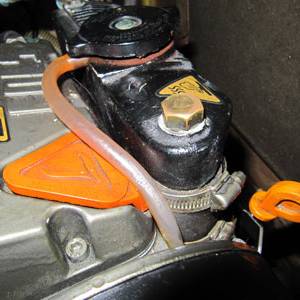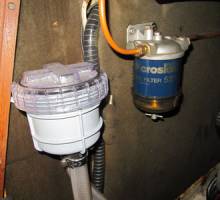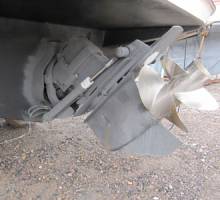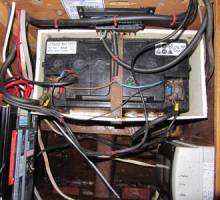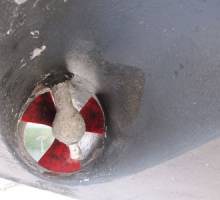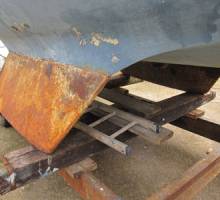
TIPS on laying up your boat from Boatshed.com
Top 10 Tips for laying your boat up this winter.
The days are getting shorter and the wind seems to think it is already Autumn. Southampton Boat show is now over and for many of us our thoughts have turned to the end of this year’s summer sailing season
This is a great time to sell your boat and your nearest Boatshed.com broker will help you to value, list and sell your boat. We have buyers waiting to find your boat for sale and with up to 80 photos to view for each boat we know that Boatshed.com listed boats sell quickly at this time of year. Give us a call or we'll contact you
For those of us not mad enough to sail through the winter we thought some tips on laying your boat up would come in handy. Laying up for the winter can seem like a daunting task. Don’t worry, there is work to be done but it is all common sense and we bet you will know most of this before we list it.
Remember – a stitch in time saves nine – all the work you do now will mean that when the weather warms up again in the Spring you can get out there quickly and be fully confident your boat is ready for a new season.
1. Engine
Service your engine or have someone service it for you. You should ensure the oil is changed, also the filters – oil and fuel filters and water separators. Check your gearbox oil and top it up or change it if necessary. Check the water pump impeller for any signs of damage as that may need to be replaced too. The same with the fan belt. It’s always worth keeping an eye on the sacrificial anode in the engine, replace that when it looks too worn away. Take a look at the engine, the gearbox and any couplings to make sure there are no signs of wear and tear – if there are then have them serviced. For fresh water cooled engines replace the water with a water/anti freeze mix and for salt water cooled engines drain down the raw water.
2. Boat Systems
Check the various systems on your boat, these include generators, water makers, water tanks and pumps, autopilots, gas installation and cookers, fridge and air conditioning, heaters and heads. Look for signs of wear and tear, this could be corrosion, scoring of any kind, discolouration. Drain down the water based systems to avoid any problem from freezing conditions while your boat is out of the water. You can actually flush fairy liquid or even cooking oil through the loo to lubricate it. Service these various systems as necessary or have someone service them for you. Check the state of your batteries and top up the distilled water if they need it, or replace as necessary.
3. Sails
Inspect your sails for wear and tear, and send them for servicing as required. Sometimes just a wash can inject new life into tired sails and remove any stains or mildew that has accumulated. Find a local sail maker that offers professional washing (yes they use huge washing machines!), it’s not too expensive and saves you getting down on your hands and knees with a scrubbing brush, and the sails tend to come up crispy and cleaner. Fold your sails well and store them in a dry place.
(Take the same care with sail covers, spray dodgers and awnings.)
4. Rigging
Check both your running and standing rigging or have someone who knows what they are looking for check it for you. Running rigging, that’s all your ropes, can be removed and cleaned. Best not to put ropes in the washing machine as this disturbs the weave, soak them in a bucket of warm soapy water and rinse and dry them well. Feel along each rope for any fraying and replace frayed ropes.
Check over all of your standing rigging, include a trip up the mast to look over spreaders, blocks and sheaves. Look out for signs of wear and tear – disfigured equipment, exposed wire strands.
It’s worth checking your insurance company’s requirements relating to the age of standing rigging and any need for a survey. It would be a pretty annoying thing to realise just as you were putting your boat back in the water next spring that you need a rigging survey for insurance purposes – the riggers will all be terribly busy then.
5. Deck
Check over the state of the deck and make sure there are no signs of any leaks from through deck fittings and that the gel coat is intact. You can clean and polish the gel coat around the deck as you see fit. Any damage to the gel coat needs to be re-gelled and polished. Check the state of any wood fittings or trim and varnish or coat them as appropriate. Clear anything not needed out of the lockers and take it home with you for dry storage over the winter. You can also take any removable fitting such as tiller extensions or locker lids to save the varnish.
6. Deck Gear
Check and where necessary service the gear on your deck which includes furling gear – both forestay and/or in-mast – main and genoa winches, main and genoa tracks and cars, anchor winches, halyard winches. Check your compass binnacle or housing to ensure it’s all intact or remove it where possible for safe storage over the winter. Check your navigation lights to make sure they are not letting in any water. You can even take the bulbs out and put Vaseline on the terminals if you have the time.
7. Safety Gear
Take your liferaft and dinghy home and check them over – have the liferaft professionally serviced at the designated intervals. If you use an outboard engine with your dinghy you should service it or have it serviced. Make sure fire extinguishers and flares are in date and show no signs of corrosion or perishing. Check that your EPRIB is in good working order should you use one and check to see if it needs servicing..
8. Hull
Take a good look at the hull above and below the water line. Check for cracks in the gel coat and clean, polish or re-gel worn areas. Give moving parts a spin or a shake and make sure that there is no play in your rudder, propeller or bow thruster and have them serviced if needs be – a folding propeller may need servicing. Check for any disfigurement or corrosion around the trim tabs. Clean and fair the hull and fill or fair any blisters. Change the anodes if they need it and apply antifoul to the hull being careful not to antifoul the anodes.
9. Keels
Check the join between the keel(s) and the hull as this may need fairing and/or filling. Inspect the keel bolts for any corrosion and to make sure they are properly tightened.
10. Insurance
Check your insurance documents now, make sure the policy covers the vessel out of commission stored in a yard. Check when a new survey is required, insurance companies will usualy ask to see a survey on a regular basis. If necessary, this can be arranged early on during the winter. Surveyors can be very busy around the start of the following season.
